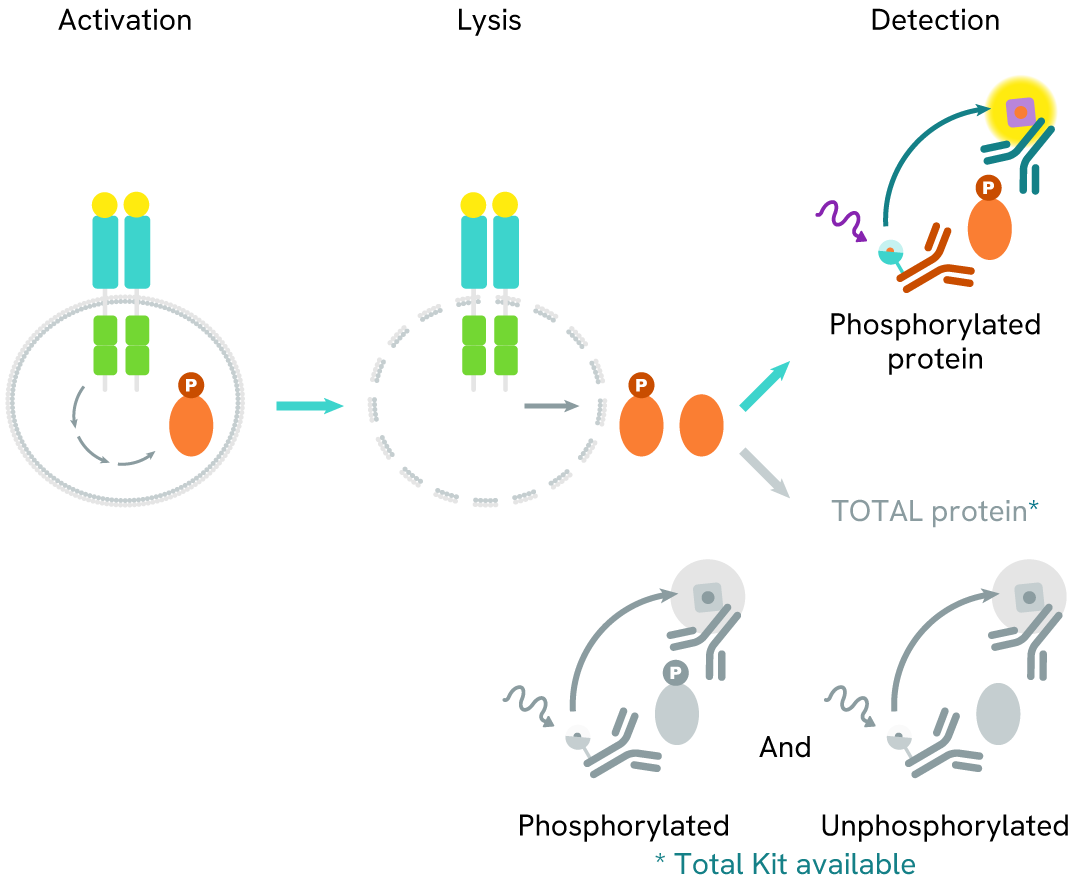

HTRF Human and Mouse Phospho-YES Tyr426 Detection Kit, 10,000 assay points
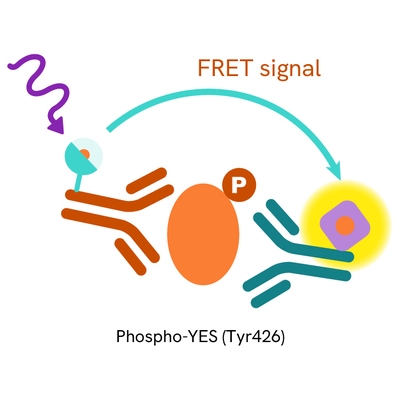
HTRF Human and Mouse Phospho-YES Tyr426 Detection Kit, 10,000 assay points
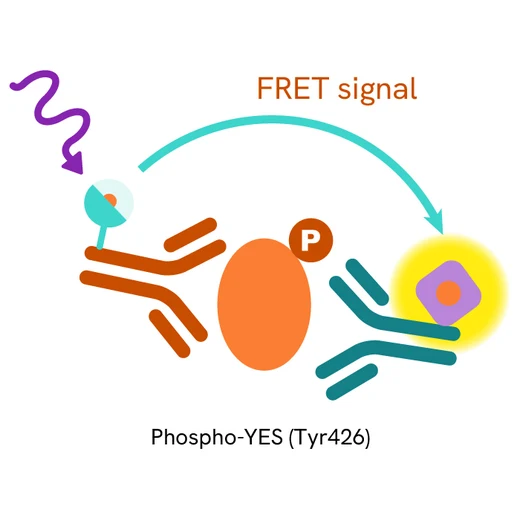

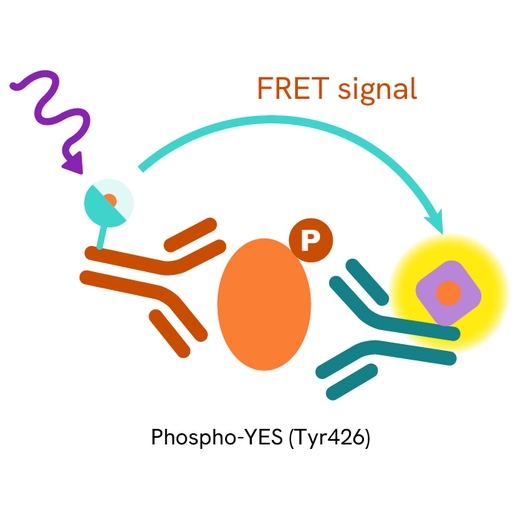

This HTRF kit allows for the cell-based quantitative detection of YES when phosphorylated at Tyr426.
| Feature | Specification |
|---|---|
| Application | Cell Signaling |
| Sample Volume | 16 µL |
This HTRF kit allows for the cell-based quantitative detection of YES when phosphorylated at Tyr426.


HTRF Human and Mouse Phospho-YES Tyr426 Detection Kit, 10,000 assay points


HTRF Human and Mouse Phospho-YES Tyr426 Detection Kit, 10,000 assay points


Product information
Overview
YES, also known as YES1 which belongs to the Src family of kinases, is a proto-oncogene and a non-receptor tyrosine kinase located at the plasma membrane. Once activated, YES phosphorylates various downstream effectors including LATS1/2, YAP, FAK, Caveolin-1, and p130CAS, as well as Crk. The kinase contributes to a wide range of cellular processes, including cell proliferation, survival, cytoskeleton rearrangements, migration, and adhesion. Dysregulation of YES can contribute to pathological conditions, especially in the context of cancer.
Specifications
| Application |
Cell Signaling
|
|---|---|
| Automation Compatible |
Yes
|
| Brand |
HTRF
|
| Detection Modality |
HTRF
|
| Lysis Buffer Compatibility |
Lysis Buffer 4
|
| Molecular Modification |
Phosphorylation
|
| Product Group |
Kit
|
| Sample Volume |
16 µL
|
| Shipping Conditions |
Shipped in Dry Ice
|
| Target |
YES
|
| Target Class |
Phosphoproteins
|
| Target Species |
Human
Mouse
|
| Technology |
TR-FRET
|
| Therapeutic Area |
Inflammation
Oncology
|
| Unit Size |
10,000 assay points
|
How it works
Phospho-YES (Tyr426) assay principle
The phospho-YES (Tyr426) assay measures YES when phosphorylated at Tyr26. Unlike Western Blot, the assay is entirely plate-based and does not require gels, electrophoresis, or transfer. The assay uses 2 antibodies, one labeled with a donor fluorophore and the other with an acceptor. The first antibody was selected for its specific binding to the phosphorylated motif on the protein, and the second for its ability to recognize the protein independently of its phosphorylation state. Protein phosphorylation leads to an immune-complex formation involving both labeled antibodies, and which brings the donor fluorophore into close proximity to the acceptor, thereby generating a FRET signal. Its intensity is directly proportional to the concentration of phosphorylated protein present in the sample and provides a means of assessing the protein's phosphorylation state under a no-wash assay format.

Phospho-YES (Tyr426) two-plate assay protocol
The two-plate protocol involves culturing cells in a 96-well plate before lysis, then transferring lysates into a 384-well low volume detection plate before the addition of Phospho-YES (Tyr426) HTRF detection reagents. This protocol allows for the cells' viability and confluence to be monitored.
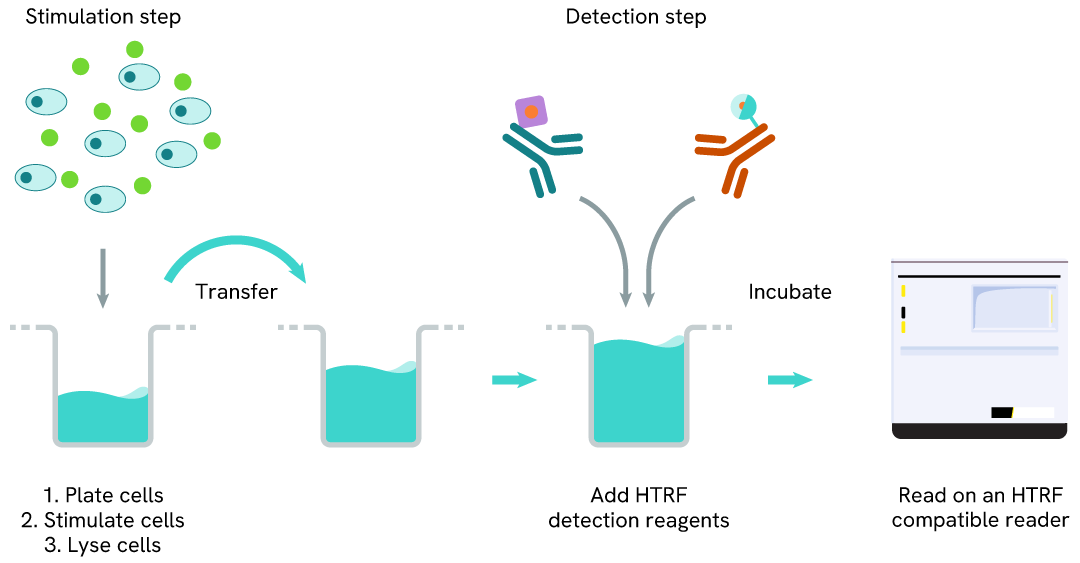
Phospho-YES (Tyr426) one-plate assay protocol
Detection of phosphorylated-YES(Tyr426) with HTRF reagents can be performed in a single plate used for culturing, stimulation, and lysis. No washing steps are required. This HTS designed protocol allows miniaturization while maintaining robust HTRF quality.
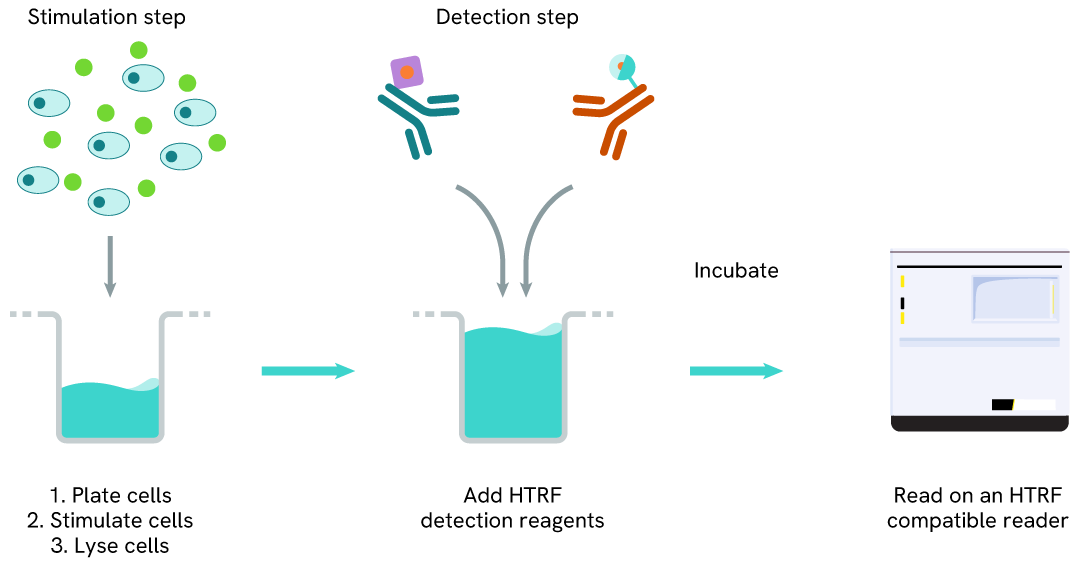
Assay validation
Inhibition of phospho-YES (Ty426) in HEK293 cells
HEK293 cells were seeded in a 96-well culture-treated plate (100,000 cells/well) in complete culture medium, and incubated overnight at 37°C, 5% CO2. The cells were treated for 1.5 h with increasing concentrations of Dasatinib, and 30 µM of Pervanadate were added 30 minutes before the end of the treatment. The cells were lysed with 50 µL of supplemented lysis buffer #4 for 30 minutes at RT under gentle shaking.
For the detection step, 16 µL of cell lysate were transferred into a 384-well low volume white microplate and 4 µL of the HTRF Phospho-YES (Tyr426) or Total-YES detection reagents were added. The HTRF signal was recorded after 4h.
As expected, the Src kinase inhibitor Dasatinib induced a dose-dependent decrease in YES phosphorylation, without impacting the expression level of the protein, while no toxicity was detected (ATPlite Luminescence Assay System, #6016943).
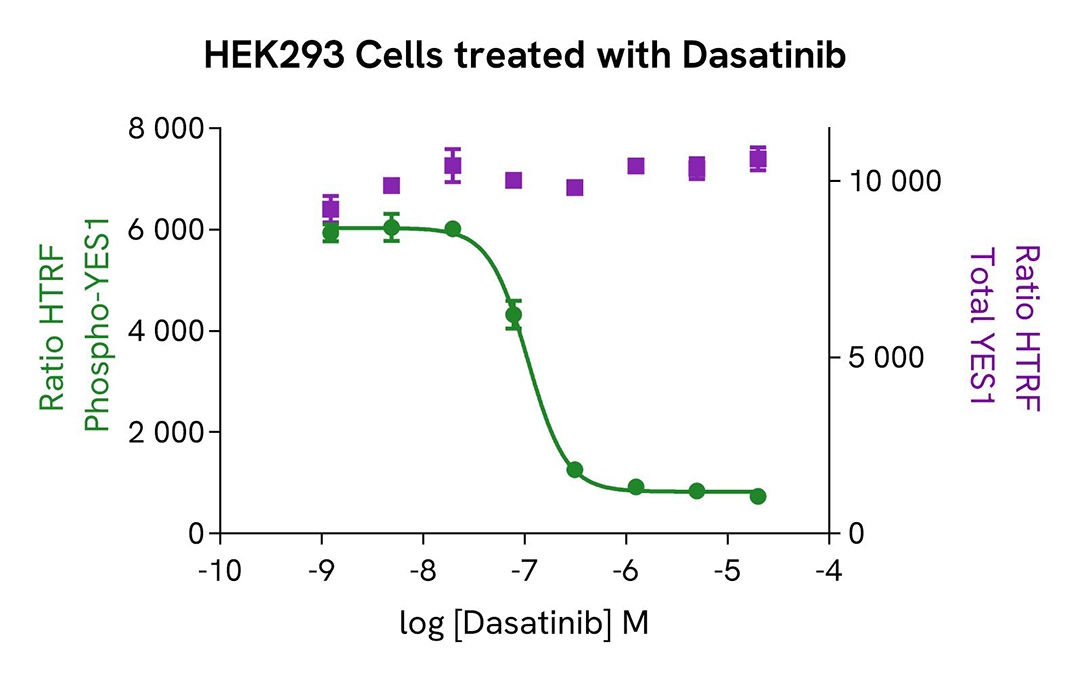

HEK293 cells were seeded in a 96-well culture-treated plate (100,000 cells/well) in complete culture medium, and incubated overnight at 37°C, 5% CO2. The cells were treated for 1.5h with increasing concentrations of CH6953755, and 30 µM of Pervanadate were added 30 minutes before the end of the treatment. The cells were lysed with 50 µL of supplemented lysis buffer #4 for 30 minutes at RT under gentle shaking.
For the detection step, 16 µL of cell lysate were transferred into a 384-well low volume white microplate and 4 µL of the HTRF Phospho-YES (Tyr426) or Total-YES detection reagents were added. The HTRF signal was recorded after 4h.
As expected, the Src kinase inhibitor CH6953755 induced a dose-dependent decrease in YES phosphorylation, without significantly impacting the expression level of the protein, while no toxicity was detected (ATPlite Luminescence Assay System, #6016943).
Assessment of phospho-YES (Tyr426) level in various cell lines
HEK293, HeLa, HAP1, and A431 human cells and NIH3T3 mouse cells were seeded at 100,000 cells/well in a 96-well microplate. After 24h of incubation, the cells were treated for 30 min with 30 µM of Pervanadate before being lysed for 30 minutes with supplemented lysis buffer #4, following the protocol for adherent or suspended cells, at RT under gentle shaking.
16 µL of lysate were transferred into a 384-well low volume white microplate before the addition of 4 µL of the HTRF Phospho-YES (Tyr426) detection reagents. The HTRF signal was recorded after a 4h incubation.
The HTRF Phospho-YES (Tyr426) assay detected YES phosphorylation at residue Y426 in various cellular models with different phosphorylation levels.
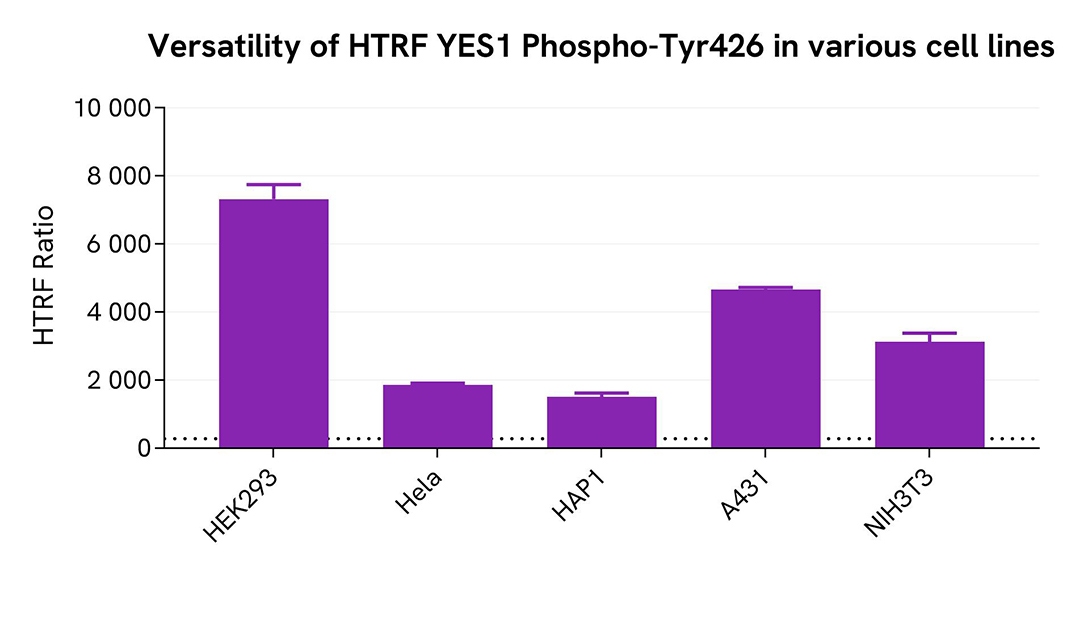
HTRF YES Phospho-Y426 assay compared to Western Blot
HEK293 cells were grown in a T175 flask in complete culture medium at 37°C, 5% CO2 until 80% confluence. 30µM of Pervanadate were added to the cells for 30 minutes before being lysed with 3 mL of supplemented lysis buffer #4 (1X) for 30 minutes at RT under gentle shaking.
Serial dilutions of the cell lysate were performed using supplemented lysis buffer, and 13 µL of each dilution were transferred for both detections. For HTRF detection, 13µL were transferred into a white 384-well microplate before the addition of 3 µL of supplemented lysis buffer #4 (1X). 4 µL of HTRF Total-YES detection reagents were then added. Equal amounts of lysates were used for a side-by-side comparison between HTRF and Western Blot.
Using the HTRF Phospho-YES (Tyr426) assay, 1,950 cells/well were enough to detect a significant signal, while 7,800 cells were needed to obtain a minimal chemiluminescent signal using Western Blot. Therefore, in these conditions, the HTRF Phospho-YES (Tyr426) assay was 8 times more sensitive than the Western Blot technique.
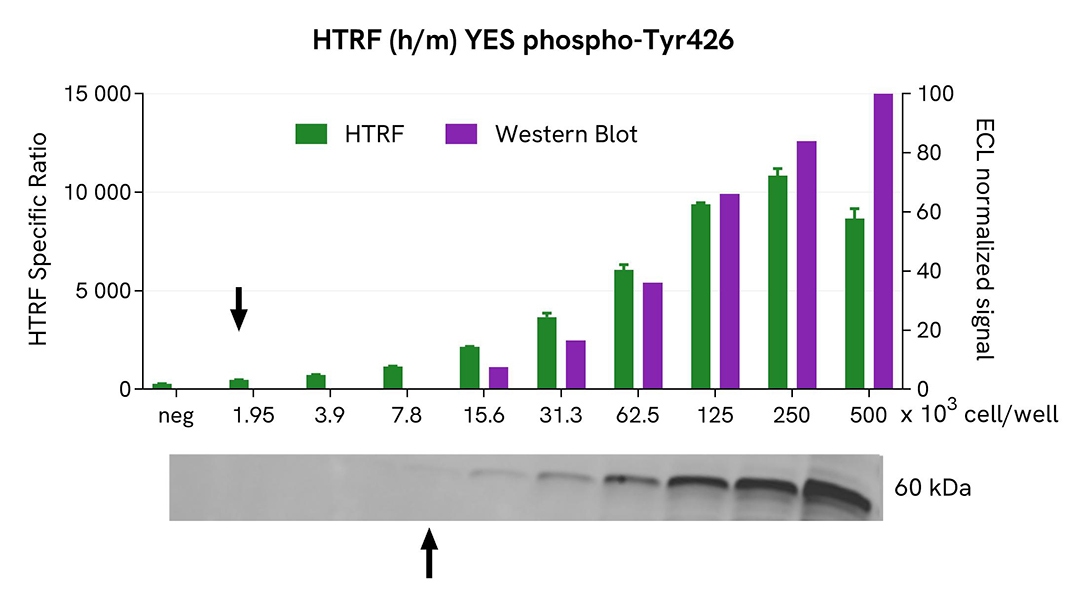
Simplified pathway
YES signaling pathway
YES, which belongs to the Src family of kinases, is a proto-oncogene and a non-receptor tyrosine kinase located at the plasma membrane. Once activated, YES phosphorylates various downstream effectors including LATS1/2, YAP, FAK, Caveolin-1, and p130CAS, as well as Crk. The kinase contributes to a wide range of cellular processes, including cell proliferation, survival, cytoskeleton rearrangements, migration, and adhesion. Dysregulation of YES can contribute to pathological conditions, especially in the context of cancer.
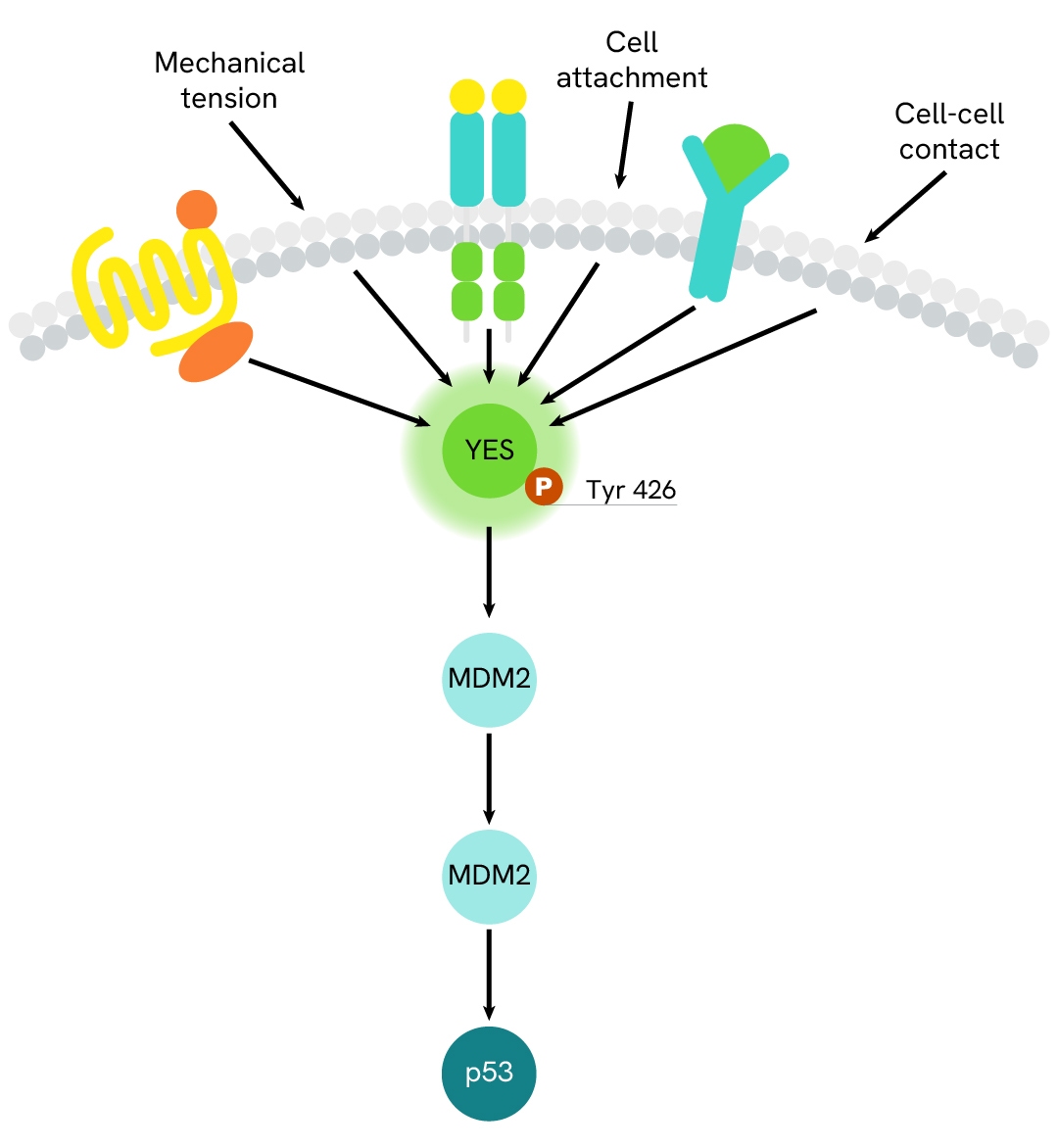
Resources
Are you looking for resources, click on the resource type to explore further.
This technical note explores how pervanadate enhances tyrosine phosphorylation detection, enabling clearer insights into kinase...
SDS, COAs, Manuals and more
Are you looking for technical documents related to the product? We have categorized them in dedicated sections below. Explore now.
- 言語French国France
- 言語German国Germany
- 言語Greek国Greece
- Resource TypeManual言語English国-


How can we help you?
We are here to answer your questions.





































